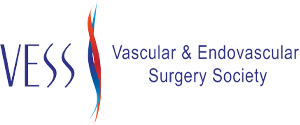Vascular and Endovascular Surgery Society
The Vascular and Endovascular Surgery Society (formerly the Peripheral Vascular Surgery Society) was founded in 1976 as a national forum for young fellowship-trained peripheral vascular surgeons. From a modest beginning as the Peripheral Vascular Surgery Club, it has grown from an original 19 to over 1000 Active, Senior & Candidate members. It remains, however, the only national vascular organization that requires specific fellowship training in general vascular surgery as a prerequisite for membership. To ensure the Society’s commitment to the young vascular surgeon, active members must become senior members after 15 years. Both active and senior members are urged to attend and participate in the Annual Winter Meeting as well as the Spring Meeting held the day preceding the Vascular Annual Meeting (VAM).
Surgical specialties and the organizations that represent them arise to fill a need. In the early 1970’s, a need arose for surgeons specifically trained in the diagnosis, non-operative and operative management of peripheral vascular disorders. As these trainees emerged from fellowship programs throughout the country, the additional need arose to provide a national forum through which these young fellowship-trained peripheral vascular surgeons could informally meet, exchange ideas, and mutually promote the new specialty of peripheral vascular surgery.










 A strategic planning retreat was held during the Winter meeting including the PVSS leadership, Executive Council members, PVSS representatives and Committee Chairs. Topics included:
A strategic planning retreat was held during the Winter meeting including the PVSS leadership, Executive Council members, PVSS representatives and Committee Chairs. Topics included:
 The PVSS established a relationship with the Journal of Vascular Surgery for publications from the Spring meeting. This was a major achievement, as it greatly increased the impact factor of these publications and the society’s academic profile.
The PVSS established a relationship with the Journal of Vascular Surgery for publications from the Spring meeting. This was a major achievement, as it greatly increased the impact factor of these publications and the society’s academic profile.




